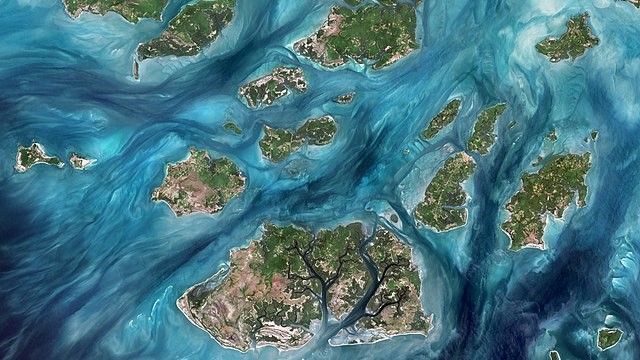Off the coast of Guinea-Bissau, scattered across the Atlantic like emerald beads, lie the Bijagós Islands. Remote and largely undeveloped, the archipelago is a place where mangrove forests stretch into the horizon, sea turtles nest undisturbed on deserted beaches, and cultural traditions continue with rhythms as steady as the tides.
Comprising more than 80 islands, only about 20 of which are permanently inhabited, the Bijagós form one of West Africa’s most distinctive ecological and cultural landscapes. Vast wetlands and estuaries provide crucial habitats for migratory birds. Manatees and saltwater hippos—rare even within the region—find refuge in its waterways. Several islands, including Bolama-Bijagós, have been designated UNESCO Biosphere Reserves, underscoring the archipelago’s significance in global conservation efforts.
Yet the islands are not only a sanctuary for wildlife. The Bijagó people, who have inhabited the archipelago for centuries, maintain cultural practices that remain deeply tied to the natural environment. Ceremonies and initiation rites often align with agricultural cycles and fishing seasons, reflecting an understanding of the land and sea passed down through generations. Masks, sculptures, and ritual performances continue to play a central role in community life, offering glimpses into a worldview where the spiritual and ecological are inseparable.
Tourism here remains modest but growing, often community-led and deliberately eco-conscious. Local initiatives promote homestays, guided tours of sacred sites, and workshops in traditional crafts. Visitors might witness a festival, learn the techniques of palm-wine tapping, or share meals featuring freshly caught fish and island-grown produce. Such exchanges, carefully managed, aim to provide income without undermining cultural integrity or ecological balance.
Adventure lies in the rhythms of island life as much as in its landscapes. Journeys between islands by pirogue reveal coastlines fringed with white sand and mangrove roots tangled like sculpture. Coral reefs, little disturbed, invite snorkeling and diving, while the stillness of certain lagoons makes them favored nesting grounds for turtles. The pace is unhurried, shaped less by clocks than by tides and seasons.
Challenges persist. Rising sea levels, overfishing, and the pressures of global tourism threaten to unsettle this fragile equilibrium. Conservationists emphasize that sustaining the archipelago will require continued cooperation between local communities, the Guinean government, and international organizations. For now, however, the Bijagós remain one of the few places where nature and tradition coexist in ways that feel both ancient and urgently contemporary.
Sources
- UNESCO. “Bolama-Bijagós Biosphere Reserve, Guinea-Bissau.” UNESCO MAB Programme, 2023.
- Temudo, Marina Padrão. “The Relevance of Local Knowledge in Guinea-Bissau: Practices and Rituals in the Bijagós Islands.” Africa, vol. 75, no. 3, 2005, pp. 422–440.
- World Wide Fund for Nature (WWF). Coastal and Marine Conservation in West Africa. WWF, 2022.
- Forrest, Joshua B. Guinea-Bissau: Power, Conflict, and Renewal in a West African Nation. Westview Press, 1992.


